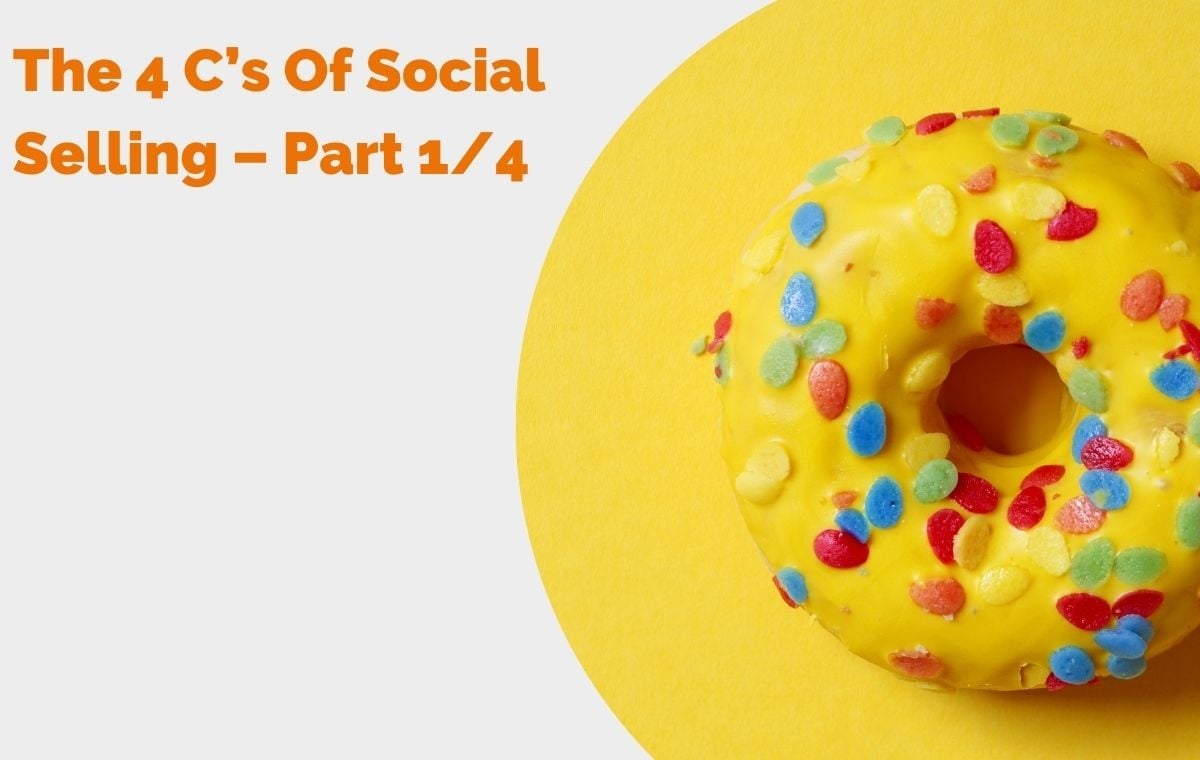
I’ve long believed that Social (or Digital) Selling enablement, in isolation, will never work. Here’s why. When Social Sellers get to the part where they need to nurture their networks with content, they’re spending hours trying to find good quality industry news and articles. When they try to showcase the credibility of their organisation, all they have is product focused content to share. When it comes to building connections, too often they transfer their resilient cold calling expertise to the digital environment resulting in mass InMailing.
Social Selling implemented incorrectly could create an unproductive sales team that are annoying their networks with overly promotional content whilst destroying their chance to make a good first impression on a new account.
In this series of 4 blogs, I’m going to chunk the Social Selling process into 4 sections, all of which influence the success of your program and ultimately your sales teams.
They are simply:
- Content
- Connections
- Conversations
- Conversion
…in that order. Today, I’m focusing on Content.
Content: The First ‘C’ Of Social Selling
Assuming your sales teams have done the basics (optimised their profile, built a good network and listened to their customers) they’re ready to move to the next stage in the social media maturity journey. Sharing and engaging with content.
Now there are a few mistakes that sales teams experience at this point:
- They don’t share any content
- The only share company branded content
- They don’t have a content strategy sharing sporadically
- They share too much content (more than twice a day)
- They just share content without adding a comment as to why
- They don’t use hashtags or draw people into their content with @mentions
- They don’t engage with other people’s content
- They don’t engage with people who comment on their content
I think you get the idea.
Content is the cornerstone to successful Social Selling programs – get this bit wrong and your Social Sellers will hit a wall. Done right, people will find them, follow them and connect with them. It’s how you move to the next stage – Connections (but more on that in the next blog).
This is the normally the stage where I jump for joy when companies tell me they have an employee advocacy tool because I know this will help take the scary out of social for many salespeople.
However, this is also where I get a little disappointed and find that the employee advocacy tool is full to the brim with company content with no variety or volume to sustain a healthy program.

Employee advocacy tools are often blamed for creating robotic like employees all sharing the same content. But this isn’t the fault of the tool – it’s how it is managed that is at fault. Advocacy tools need to be managed properly with…
- A healthy mix of company, external and influencer content
- A decent volume of content every day (at least 3-5 articles per day per category)
- A channel for employees to submit their own content
So, here’s how to address Content when it comes to Social Selling:
Give Them A Head Start – Employee Advocacy
Advocacy tools are a great partner for Social Selling if the tool itself includes third party content (and enough of it). It also provides a great opportunity add another layer of measuring the performance of your sales teams. Are your top sharers (and I don’t mean by number of shares) also your top SSI scorers? The correlations and patterns that we’ve analysed have provided positive results!
Show Them How To Discover
It’s fair to say that your sales team will be focused by industry or technology and so sometimes you can’t centrally administer content for all those different areas. Helping your teams to discover their own content is the next step. Teach them how to use Talkwalker Alerts, Feedly, Flipboard (to name a few). Help them refine using Boolean search queries so they only get quality content.

Less Is More
In our training, we always say that it’s better to share one good post a week (with commentary, hashtags, @mentions) than to share twenty that you’re blasting out to tick a box. Spend time finding (or creating) a piece of content that you find interesting that you think will resonate with your audience. Less is more which means you have time to…
Check What Works (And What Doesn’t)
The devil is in the detail. Who’s liking your content? Who commented on your content? Who re-shared your content? These are all digital indicators that your sales teams (and sales managers) should be keeping an eye on. These are your opportunities to turn Content into Connections (here I go again – you must wait for the next blog!)
Consistency Is Key
Finally, consistency (another C). It’s better to start small and build up. If you share every day for one week and then forget it for three weeks, you’ll never create an impact and people will forget you. Social media is an interesting place – people don’t sit and think “I haven’t heard from Sarah in a while” – they’ll just notice the others in their feed until you pop back into it. Be consistent.
Hopefully, you’ll understand that Content is much more than just posting. It’s about listening, sourcing, customising, optimising, reviewing and then posting. Got any other content tips you want to share?
Next time I’ll be moving onto Connections. Part 2 will dig a little deeper into turning Content into Contacts looking at the indicators to engage and my view on LinkedIn automation platforms to speed up networking.

